Scientists this year discovered some of the planet Earth’s most well-preserved secrets. They found hidden rivers, bits of lost continents and remnants of ancient rainforests, and delved into the ancient history of the planet using the latest technology. Who knows what they will discover next! While we wait to find out, here are 10 of the geological discoveries that shook our world in 2020.
Historic explosion in Yellowstone
Yellowstone hotspot is located under the hot springs and hot springs in the National Park, and about 9 million years ago, the volcano erupted in Two historic eruptionsScientists found. After analyzing ancient volcanic tracts and volcanic sediments in the area, the team uncovered evidence of an eruption of a previously unknown volcano, which they called the McMullen Creek supervolcano and Grey’s Landing supervolcano. A Grey’s Landing eruption broke records as the largest hot eruption of Yellowstone volcano ever discovered; About 8.72 million years ago, the eruption covered approximately 8,900 square miles (23,000 square kilometers) of what is now southern Idaho and northern Nevada with volcanic debris.
Wild spots near the Earth’s core are bigger than we thought
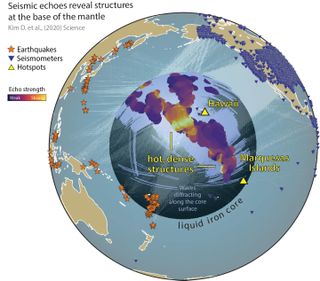
Continent-sized masses of rock lie at the boundaries of the solid mantle and liquid outer core, and now scientists think they may be Bigger than we imagined. According to previous estimates, the two largest points would be 100 times taller than Mount Everest if they were drawn to the planet’s surface. But after studying decades of seismic data from earthquakes, scientists now estimate that the Big Point under the Pacific Ocean may actually be much more monstrous. For example, a new structure was discovered along the edge of a point more than 620 miles (1,000 kilometers) in diameter.
The lost islands in the North Sea withstood the massive tsunami
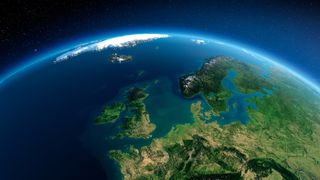
Nearly 8,000 years ago, a tsunami struck the plain between Great Britain and the Netherlands, inundating most of the area. But research indicates that some carrots may have her Withstood the tsunamiIt provides a habitat for Stone Age humans for thousands of years. Although it remained above water for some time after the tsunami, the sea level rise eventually led to the islands being inundated after about 1,000 years. Scientists learned that the lost islands only survived the tsunami after collecting sediments from the sea floor near the eastern English mouth of the River Ouse.
Related: Earth change: 7 ideas for designing the Earth on our planet
Earth’s core is a billion years old
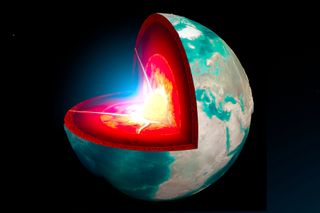
Earth’s solid inner core – a sphere of iron 1,500 miles (2,442 km) wide – likely formed around 1 billion to 1.3 billion years agoScientists estimate. By recreating the conditions in the core on a very small scale, the team was able to calculate how long a block of molten iron would take to match the current size of the core. The time window spanning nearly a billion years aligns well with historical fluctuations in the planet’s magnetic field, which has grown exponentially between 1 billion and 1.5 billion years ago. The crystallization of the inner core may have provided this enhanced magnetism, as the process will release heat into the liquid outer core; The heat drives a ripple motion in the liquid, which in turn provides energy to the magnetic field.
Related: Earth’s core is a billion years old
A piece of the lost continent found under Canada
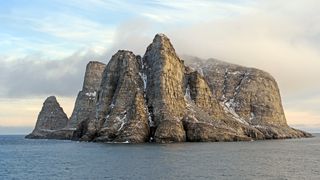
Around 150 million years ago, a now lost continent split into massive parts – much of it was recently discovered. Lurking under Canada. Scientists made the discovery while studying a type of diamond-bearing volcanic rock called kimberlite, which was collected from nearly 250 miles (400 km) under Baffin Island in northern Canada. The mineral chemistry of kimberlite matches that of the long-lost continent, making the sample site the deepest point at which evidence of the continent was found.
Related: A piece of the lost continent has been discovered below Canada
Underwater rivers are found near Australia
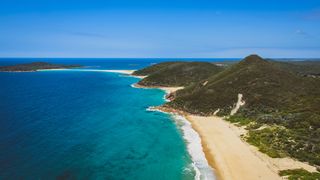
This year, scholars Discover huge rivers From the cold, salty waters that flow from the Australian coast to the deep ocean. The rivers, which researchers found employ autonomous vehicles underwater, form when shallow waters near the coast lose heat during the winter. Evaporation during the summer months makes these shallow waters saltier than deep waters, so when they cool, the dense, salty water sinks and moves across the ocean like an underwater river. These rivers extend thousands of miles and carry nutrients, plant and animal matter and pollutants into the ocean.
Related: Huge underwater rivers have been discovered off the coast of Australia
An ancient rainforest found under the Antarctic ice
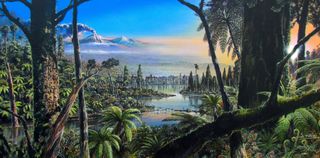
Antarctica might be the last place you’d expect to find The remains of an ancient rainforestBut that’s exactly what scientists have found under the western side of the continent. Forest remnants have been discovered in the sediment core dug from the sea floor near Pine Island Glacier. A layer of sediments appeared inside the core from the rest, as their color differed clearly from those around them; On closer examination, the scientists found ancient pollen, spores, flowering plant pieces, and a network of roots within the layer. The specimen dates back 90 million years, to the middle of the Cretaceous Period, when the climate of now frozen Antarctica was much milder.
Related: Remains of a 90-million-year-old rainforest have been discovered under the Antarctic ice
An ancient sea floor is buried 400 miles deep under China
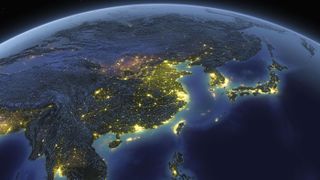
The sea floor that was lining up the Pacific Ocean floor was found buried Hundreds of miles under China, As it continues descending into the transition zone of Earth’s mantle. A slab of rock once sat on the oceanic lithosphere, the outermost layer of the Earth’s surface, but was pushed down when it collided with a neighboring tectonic plate, in what is called a subduction event. Scientists have never discovered a subduction event so deep beneath the planet’s surface, depths ranging from 254 to 410 miles (410 to 660 km) underground.
Related: Found an ancient part of the Pacific Ocean buried 400 miles under China
The lost tectonic plate is being revived?
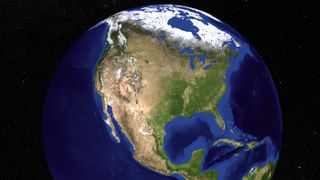
Scientists digitally Reconstructed a tectonic plate It showed that its movement likely triggered an arc of volcanoes in the Pacific Ocean about 60 million years ago. In the past, some geophysicists have argued that the plate, known as the Resurrection, never existed. But if it did exist, the plate would have pushed beneath the Earth’s crust tens of millions of years ago. So using computer reconstructions, the scientists reversed this movement, roughly pulling it along with other ancient panels to the surface. They found that the resurrection would fit a perfect piece of puzzle, east of two panels called Kula and Farallon, and that its edge would match the ancient volcanic belts of Washington state and Alaska.
Related: A “missing” tectonic plate called the Resurrection is hidden under the Pacific Ocean
The towering coral structure dwarves the Empire State Building
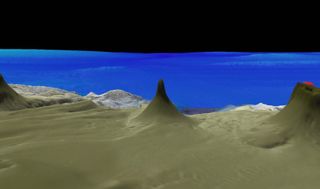
The First separate coral reefs Discover in over 100 years it stands taller than the Empire State Building. The Coral Tower is 1,640 feet (500 meters) from base to tip, and stands freely near the rest of the Great Barrier Reef off the coast of Australia. The blade-like structure is about 1 mile (1.5 km) long at its base and its summit is about 130 feet (40 meters) below sea level.
Related: The Coral “Tower” is taller than the Empire State Building discovered off the Australian coast
Originally published on Live Science.

“Reisliefhebber. Onruststoker. Popcultuurfanaat. Kan niet typen met bokshandschoenen aan.”